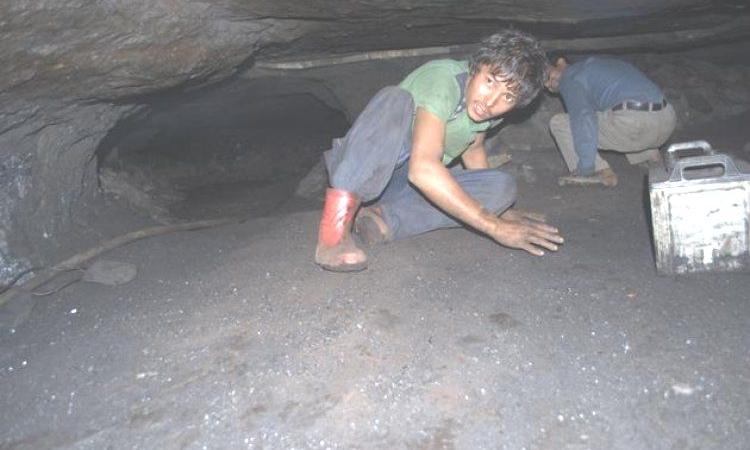
India has the fifth largest coal reserves in the world [1]. The power sector is the largest consumer of coal, followed by iron, steel and cement segments in India [1] This paper, Coal mining in northeast India: an overview of environmental issues and treatment approaches, published in the International Journal of Coal Science and Technology provides an overview of the type of coal mined in the northeast of India, how the business of coal mining is affecting the environment and the ongoing research on how to reduce the environmental impact of coal.
According to the figures given out by the Ministry of Coal, Government of India in April 2014, India produces 300 billion tons (BT) of coal, out of which 105 million tons (MT) of Gondwana coal and 1492 MT of tertiary coal reserves [2] are in the northeast India . Meghalaya and Assam have 73 per cent of the total tertiary coal reserves while Nagaland and Arunachal Pradesh contribute 21 per cent and 6 per cent of the total tertiary coal reserves, respectively.
The paper informs that coal mining has a significant and often irreversible impact on the environment. Most coal-mining districts in India have been declared critically-polluted areas. The open cast or surface mining that is dominant in India not only alters the nature of the groundwater-to-surface water interactions, but also contributes to air pollution and can result in dramatic changes in the landscape. Special attention needs to be paid to cenozoic coal that dominates the northeastern states of India, its unique properties and associated environmental issues.
The coals from the northeast are high in sulfur, volatile matter and vitrinite, yielding double the amount of tar in comparison to other Indian coals. Mining of these coals generates large volume of waste materials. The northeastern coals have low ash content. In addition, many environmentally-sensitive organic and mineral-bound elements remain enriched in these coals that can cause air, water and land pollution.
Effect on environment
Ecosystem degradation: The primitive ‘rat-hole’ method of mining adopted by private operators has caused large-scale environmental degradation in Meghalaya. Moreover, mining has resulted in haphazard dumping of coal and large scale denudation of forests which adversely affect the vegetation and the density of trees, shrubs and herbs in mined areas, scarcity of water, degradation of soil and agricultural lands and land subsidence in Meghalaya.
Air pollution: Opencast mining operations result in large scale air pollution. The major sources of air pollution in coal mining area include drilling and blasting, loading and unloading of coal and movement of heavy vehicles on the roads, dragline operations, crushing of coal in feeder breakers, presence of fire, exposed pit faces, wind erosion and the exhaust from heavy earthmover machinery. Air pollution caused by washeries is worse than any other coal-processing operations.
Acid mine drainage: In addition to air pollution, the problems related to AMD (Acid Mine Drainage) are very common in the coalfields of the northeast India, where ecology of the surrounding area is badly disrupted. The rejects and the coals dumped near the pit entrance are exposed to the environment and they being very rich in sulfur, the pyrite present in these materials is oxidised and hydrolysed, resulting in AMD generation.
High metal content in mine water: Compared to other mining sites in India, the water near the mining area of the northeast India shows higher concentration of metals such as Iron (Fe), Copper (Cu), Manganese (Mn), Zinc (Zn), Nickel (Ni) and Lead (Pb).
Impact of coal mines on water resources
The impact of AMD in the streams and groundwater at the vicinity of collieries is a growing problem in the northeast India. For example, in 2007, massive fish deaths were reported in the Lukha river on the eastern border of Jaintia Hills district in Meghalaya which were attributed to AMD contaminating the stream water and sediments. The water here has low pH, high conductivity, high concentration of sulphates, iron and other toxic metals, low dissolved oxygen (DO) and high biological oxygen demand (BOD), making it unsuitable for drinking. It has also adversely affected the aquatic life in Jaintia Hills.
The paper provides an overview of the governmental regulations and acts made in the context of coal mining in India and argues that it is important to urgently look into how coal mining affects the environment. The paper mentions a few technologies that have been developed to reduce the environmental impact of coal.
- The removal of sulfur through methods such as eco-restoration and sequential solvent extraction
- Treatment of AMD through a sequential alkalinity producing (SAP) system coupled with biological processes
The paper warns that the demand for coal in India is projected to increase dramatically leading to increased coal mining in different parts of India including the northeast region. Since coals in the northeast India are known to create potentially harmful impacts, the paper proposes what needs to be done.
- More studies need to be done in the field to assess the impact of coal mining on biodiversity, soil, air, surface and ground water in northeast India
- There is a need for further research on developing effective, low cost and environment-friendly technologies to clean coal and to use these technologies in the field
- There is an urgent need to encourage and emphasise the need to develop alternative clean sources of energy to meet future energy demands
References:
1. Indian Chamber of Commerce (Date not specified) The Indian coal sector: Challenges and future outlook. Accessed on 23rd June 2016.
2. Government of India, Ministry of Coal (2016) Coal Reserves. Accessed on 26th June 2016
A copy of the paper can be downloaded from below:
/articles/when-coal-goes-unheard